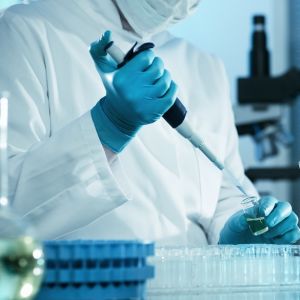A Complete Guide to Coliform Bacteria Testing
Posted by Anthony Lewis on January 4th, 2022
The experts at microbial testing services strongly recommend annual coliform bacteria testing for private water wells as they can be contaminated any time without changing the taste or odor of the water. Coliform bacteria potentially contaminate the water in various ways thus it is necessary to test the water at right time.
You need to remember the below cases to remain safe always.
• Carry out coliform bacteria test at least once a year for all private residential water wells.
• Conduct the test when a new well has been constructed.
• Do not forget to have coliform test after something has been done on the well.
• When you suspect or see any indication that contamination has taken place, such as if the well was covered with flood water, you should immediately opt for coliform testing.
What Is Coliform Bacteria?
There are two categories of coliform bacteria in general that are found in well water - total coliform and fecal coliform or Escherichia coli (E. coli).
The first one, Total coliforms, are found naturally in the environment and are located in the soil, in water, which are influenced by surface water, and in animal or human waste. The occurrence of total coliform, by itself, does not mean that the resource is infected; however, it can show that if not more of the more serious types of harmful bacteria, such as fecal or E. coli bacteria, could be there.
Fecal coliforms belong to the total coliforms group that are thought to be present especially in the gut and feces of warm-blooded animals and are considered a more precise indication of human or animal waste than the total coliforms.
E. coli is the key species in the fecal coliform group and is treated as the best indicator of fecal pollution and the possible existence of pathogens. You need to remember that most coliform bacteria do not cause disease.
Why Should We Do Coliform Testing?
In order to know the standard of your water i.e. whether safe for human use, you must carry out bacteria testing. It is impossible to tell by the look, taste, or smell of the water if disease-causing organisms are in it. That\'s why it is recommended that you test water for coliform bacteria at least once a year and more frequently if bacteria have been a problem earlier.
Concentrations of pathogens usually from fecal contamination are tiny, and the count of different possible pathogens is large. Thus this is not practical to test for pathogens in every water sample collected. Instead, the existence of pathogens is recognized with indirect evidence by testing for an “indicator” organism like coliform bacteria.
The test for total coliform bacteria is the most basic test for bacterial contamination of a water supply. Total coliform numbers provide a general indication of the sanitary condition of the water supply.
Which Microbial Testing Lab Do We Prefer?
Even though the at-home test is easy, fast, and effective for determining if your well water has coliform and E.coli or not, you should go for a well-known microbial testing lab to get more precise solutions. The microbiologists at the laboratory are smart enough to conduct high-end tests to find the coliform bacteria using the modern equipment and latest technologies in the industry.
In case, you wish to do the test on your own, you can simply by using various test kits available in the market. The mechanism of test turns the media into blue-green if coliform bacteria are detected.
How Do We Collect Water Sample For Test?
You need to keep in mind some points while going for collecting a water sample and send it to the nearby microbial testing laboratory. Get started.
• Clean your hands with soap and warm water.
• Take the sample from a cold water tap. Use a tap without a screen or remove the screen before collecting the sample.
• Open the tap freely for a couple of minutes prior to collecting the sample.
• Hold the bottle near the tap base to collect the sample. Fill it at least 200 ml and never overfill the bottle.
• Tight the bottle and it is secure, but do not over-tighten it.
• Place the identification label from the requisition form on the bottle.
The requisition form should contain the following things:
• Name and contact number
• Mailing address and postal code
• Details of Collection site e.g. kitchen sink
• Legal land description and/or civic address
• Time and date of sample collection
What Should We Do if Coliform Bacteria are Detected in our Water?
If E.coli or fecal coliform are identified in the water, the first step should be an emergency chlorination that usually lasts two to five days. During that period it is recommended that you should vigorously boil the drinking and cooking water for one-two minutes before using it.
In fact, it seems inevitable to continue testing the water because if anything happens to the chlorine residual, or if the chlorine-demand changes and the consumers fail to know about it, the water can be unsafe again. In case, fecal coliform or E. coli is detected in well water, your primary step should not merely be to disinfect the system but to identify the source of your bacterial contamination.
About Author:
Anthony Lewis is a professional writer having deep interest in scientific innovations. In addition, he has been imparting training on personality development in various institutes as guest faculty. For over three years, Lewis has been penning informative pieces on Microbiological testing laboratory and bacteria test kit of Biosan Laboratories Inc.


